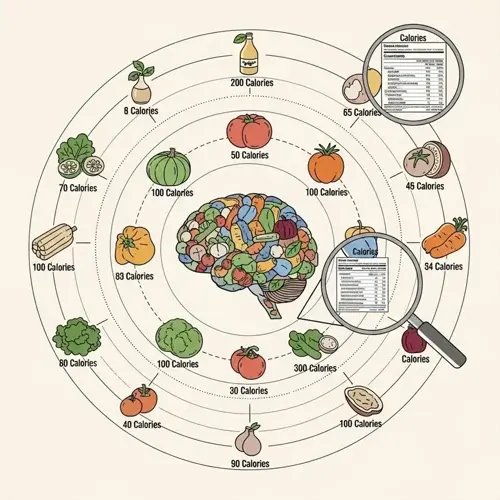How to Start Meditating: A Beginner's Guide

Written by
Chen Jialiang
Reviewed by
Prof. William Dalton, Ph.D.Discover how easy it is to start to meditate by spending just 2 minutes a day focusing on your breath.
Ground your practice with consistency, by attaching it to something you do every day, such as having your morning cup of coffee.
Identify distractions by noticing your thoughts without judgment and bring your focus back to your breath.
Experiment with lying down, sitting, or standing in your posture practice to support your lifestyle needs.
Start with a practice as short as 2 minutes everyday and extend your time over the weeks until your practice is becoming longer, even up to 20-minutes!
Continue your practice and see how subtle qualities to your daily experience such as increased focus and patience develop.
Article Navigation
Many people today face constant mental noise. Learning how to meditate is a practical solution to this challenge. Meditation cleans the mental clutter away. The practice offers ways to find peace in the chaos of everyday life, requiring no special training or expertise.
Three major benefits can be appreciated by beginning to meditate. First, it definitely reduces the stress of daily living. Second, it sharpens your concentration, allowing you to work and fulfill personal tasks more easily. Last but not least, it builds our affective resistance and hence helps to equip us better for life's struggles.
In this guide, you will find simple, actionable steps to help you begin a meditation practice. We focus on techniques that you can try right away. Forget all the forms and confusing terminology and the expectations of what you are to accomplish. You will find simple, clear instructions for creating a sustainable practice that will fit.
Breath Awareness Technique
Awareness of Breath provides the essential basis for all meditation techniques. In this method, the process of breathing itself, which is performed naturally, is used as an anchor to their attention in the present moment. This technique is effective because inhaling and exhaling are performed automatically by the body. Still, the process can be attended to consciously. This is a technique, however, that is simple and easily adapted to beginners with little change to their conditions.
Concentrate on other spots for mindful breathing. Notice the feelings at your nostrils during inhalation and exhalation, or perhaps notice the rising and falling of your chest. Or again, see the expansion of your abdomen by placing your hands on it. Use the point that seems the most natural to you personally.
You will stray in your practice. These distractions are a valuable opportunity for practice. When you notice thoughts arise, see them. There is no judgment. Gently bring your attention back to the breath. Each return
Begin with only 2 minutes of breathing focus each day. Sit comfortably with your eyes closed. Follow the breath with each inhalation and exhalation. Once you are distracted, begin again without being self-critical. This simple exercise develops the fundamental skill of being present in the moment.
Preparation
- Choose quiet space without distractions for initial practice
- Set timer for 2-5 minutes using phone or gentle alarm
- Sit comfortably on chair or floor with straight spine
- Rest hands naturally on lap or thighs with relaxed shoulders
- Close eyes partially or fully to minimize visual distractions
- Take three deep cleansing breaths before beginning focus
Focus Points
- Identify where breath sensation feels strongest: nostrils, chest or abdomen
- Maintain soft attention on chosen area without controlling breath
- Notice temperature changes during inhalation versus exhalation
- Observe natural pauses between breath cycles without extending them
- Detect subtle movements in diaphragm or ribcage with each breath
- Acknowledge heartbeat rhythm as complementary focus point
Duration Progression
- Begin with 2-minute sessions for first three days
- Increase to 5 minutes after one week of consistent practice
- Extend to 10 minutes when comfortable with longer focus periods
- Add 1-minute increments weekly after establishing baseline
- Notice how concentration improves with regular practice
- Adjust timing based on daily energy levels and schedule
Distraction Management
- Acknowledge thoughts without following their narrative
- Label distractions as 'thinking' before returning focus
- Use counting system to track restarting after distractions
- Notice physical sensations without analyzing their meaning
- Release judgment about frequency of mental wandering
- Celebrate each return to breath as successful practice
Physical Adjustments
- Shift position slightly if experiencing numbness
- Place cushion under sit bones for pelvic tilt support
- Adjust head position to relieve neck tension
- Keep shoulders relaxed away from ears during practice
- Rest back against wall if maintaining posture is difficult
- Use blanket for warmth during colder meditation sessions
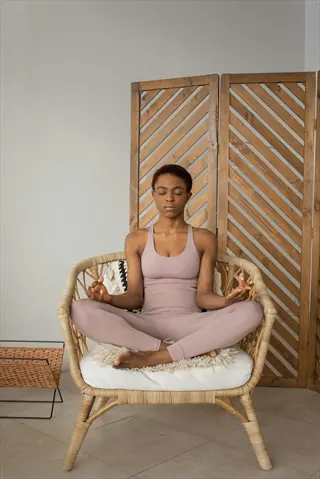
Chair Sitting
- Position: Place feet flat on floor creating ninety-degree angles at knees with spine straight against chair back for stable foundation
- Support: Position cushion behind lower back maintaining natural spinal curve while preventing slouching during longer sessions
- Hand Placement: Rest palms downward on thighs keeping elbows slightly bent allowing shoulders to relax completely without tension
- Breath Focus: Notice abdominal movement expanding and contracting against clothing fabric with each complete breath cycle
- Stability: Ground evenly through sit bones and feet distributing weight equally to prevent discomfort during meditation
- Duration: Maintain this upright seated position comfortably for ten to twenty minute meditation sessions without shifting
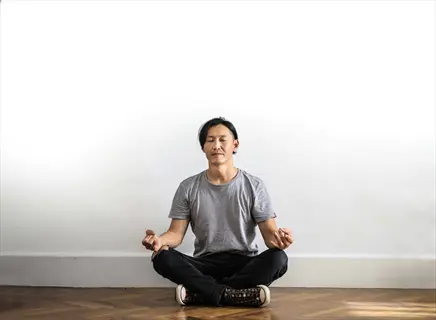
Cross-Legged Floor
- Foundation: Elevate hips above knee level using firm meditation cushion creating comfortable angle for spine alignment
- Knee Support: Place folded blankets underneath knees reducing strain on hip joints especially during extended practice periods
- Spinal Alignment: Imagine gentle lift from crown of head toward ceiling lengthening spine without creating neck tension
- Breath Focus: Observe ribcage expanding sideways with each inhalation and relaxing inward during exhalation movements
- Comfort: Periodically shift weight distribution between sit bones preventing numbness in legs and feet over time
- Modification: Try quarter-lotus position if full cross-legged posture creates discomfort in ankles or knees
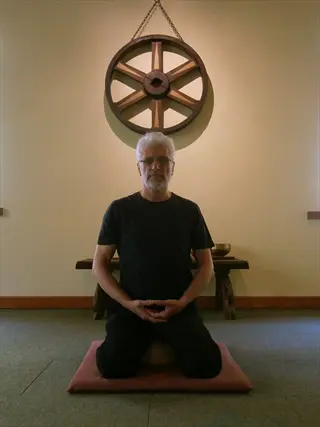
Kneeling Position
- Setup: Position meditation bench or stacked cushions between separated knees supporting full body weight comfortably
- Alignment: Maintain vertical spine alignment with hips resting securely on support structure avoiding lower back compression
- Weight Distribution: Keep knees shoulder-width apart resting on adequately padded surface reducing joint pressure
- Breath Focus: Sense breath movement through entire torso space noticing subtle vibrations with each respiration cycle
- Relaxation: Consciously release accumulated tension from jaw muscles and facial expressions during practice
- Caution: Avoid this position entirely if experiencing knee injuries or persistent discomfort during trial sessions
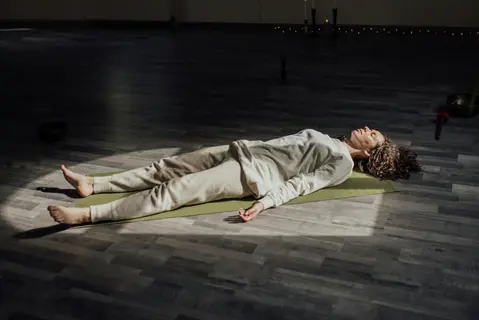
Lying Down
- Position: Lie comfortably on back bending knees with feet flat creating gentle spinal curve without tension
- Support: Place thin pillow under head maintaining neutral neck alignment preventing strain during extended sessions
- Breath Focus: Observe belly rising noticeably during inhalation and falling completely during exhalation cycles
- Alertness: Rest hands lightly on abdomen maintaining awareness and preventing accidental sleep during relaxation
- Prevention: Choose alternative positions if prone to drowsiness especially during evening meditation practices
- Modification: Elevate legs against wall reducing lower back pressure while maintaining breath awareness
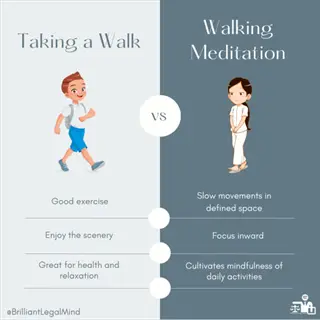
Walking Meditation
- Pacing: Move slowly with deliberate attention placing each foot consciously in small circular or straight paths
- Coordination: Synchronize natural breathing patterns with stepping rhythm without forcing specific timing intervals
- Awareness: Notice distinct sensations during heel landing, weight shifting, and toe lifting phases of movement
- Breath Focus: Maintain soft continuous attention on breath while simultaneously observing walking mechanics
- Environment: Select quiet outdoor spaces or spacious indoor areas allowing at least ten uninterrupted steps
- Transition: Begin standing still establishing breath awareness before initiating slow mindful movement
Guided Meditation Basics
Guided meditation is the easiest way for newcomers to come into meditation. The voice of a teacher will guide you through every phase of the practice, eliminating the guesswork. This treatment provides you with a solid foundation for the practice's performance. Beginners will not experience frustration during practice because everything will be obvious regarding the instructions to be followed at every moment.
Select between mediation apps or live teachers according to your needs. The apps offer specialized courses that you can work on at your convenience. Live teachers can help you immediately with any areas that need improvement. Either method of practice enables you to live in meditation alone quickly enough.
To get started, all you need is a smartphone and a pair of headphones. Get started with a mindfulness audio track or an online class. Find a quiet spot and begin immediately. This means that meditation can be done anywhere. It is possible even during a break at work or while traveling.
My advice would be for those new to the practice to start by listening to a short, five-minute guided session. Notice how reminders bring you back if you drift off into distraction. These sessions aim to build confidence and ease us into self-guided sections. Initially, the number of sessions is more important than
Resource Selection
- Evaluate free trial versions before committing to subscription services
- Choose voice tones that feel calming and non-distracting personally
- Prioritize beginner-specific content with clear foundational instructions
- Verify session lengths match available time starting with short options
- Consider background music preferences - instrumental vs. nature sounds
- Check teacher credentials for meditation training and experience
Environment Setup
- Select quiet space minimizing interruptions from people or electronics
- Use comfortable headphones blocking external noise effectively
- Position device screen-down to avoid visual distractions
- Adjust room temperature preventing discomfort during stillness
- Inform household members about practice time boundaries
- Dim lights or use eye mask enhancing focus inward
Session Preparation
- Set clear intention before starting like stress relief or focus
- Perform gentle neck and shoulder rolls releasing tension
- Begin with three deep breaths settling into physical presence
- Start playback only when mentally ready to engage fully
- Keep body position consistent with previous meditation practice
- Commit to entire session duration without checking time
Active Engagement
- Follow verbal cues without overanalyzing technique instructions
- Notice when mind wanders and gently return to guide's voice
- Avoid judging session quality based on immediate results
- Observe emotional responses without attachment during practice
- Adjust volume ensuring voice is clear but not overwhelming
- Note physical sensations arising throughout the experience
Post-Session Integration
- Remain still for one minute after audio ends processing effects
- Journal brief notes about insights or resistance experienced
- Notice subtle changes in mood or awareness post-meditation
- Drink water rehydrating after focused breathing practice
- Gradually reintroduce movement through gentle stretching
- Identify one applicable mindfulness technique for daily life
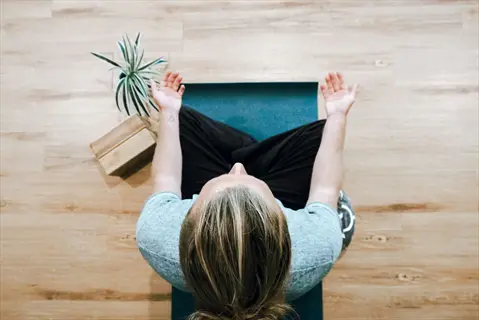
Body Scan
- Technique: Systematic attention movement progressing slowly from toes through feet legs torso arms up to the crown of the head
- Focus: Physical sensations and tension release patterns throughout different body regions during extended observation periods
- Benefits: Deep relaxation promoting better sleep quality along with enhanced bodily awareness development over consistent practice
- Beginner Tip: Start with shorter ten-minute versions focusing only on major body sections before attempting full thirty-minute scans
- Teacher Example: Jon Kabat-Zinn's foundational mindfulness-based stress reduction program incorporating detailed body scans
- App Integration: Most meditation applications include dedicated body scan programs with progressive difficulty levels for users

Breath Focus
- Technique: Verbal guidance directing attention toward natural breathing patterns including inhalation exhalation and natural pauses between
- Focus: Developing concentration skills through consistent use of breath as the primary meditation anchor point during sessions
- Benefits: Improved attention control abilities alongside better emotional regulation through stress response management techniques
- Beginner Tip: Use sessions featuring minimal background music initially to avoid distraction from core breathing instructions
- Teacher Example: Sharon Salzberg's loving-kindness foundation courses incorporating essential breath awareness components
- App Integration: Platforms like Headspace and Calm offer comprehensive beginner breath meditation series with daily practice

Loving-Kindness
- Technique: Phrase repetition practice cultivating compassion beginning with oneself then extending toward others progressively
- Focus: Emotional warmth generation through intentional well-wishing directed at different relationship categories systematically
- Benefits: Increased empathy toward others coupled with significant reduction in negative self-talk patterns over time
- Beginner Tip: Begin with shorter phrases like 'May I be happy' before advancing to complex compassion practices gradually
- Teacher Example: Tara Brach's radical compassion guided practices focusing on healing through unconditional friendliness
- App Integration: Insight Timer features extensive loving-kindness beginner collections with customizable duration options

Visualization
- Technique: Mental imagery creation involving peaceful natural scenes or healing light permeating through different body areas
- Focus: Using vivid imagination capabilities to induce deep calm states and positive emotional experiences intentionally
- Benefits: Enhanced creative thinking alongside measurable anxiety reduction through regular engagement with guided imagery
- Beginner Tip: Choose guides featuring simple nature imagery like forest paths before complex visual constructs
- Teacher Example: Jack Kornfield's mountain and lake visualizations designed for grounding and emotional stability
- App Integration: Calm offers extensive nature scene visualizations with professional narration and ambient soundscapes
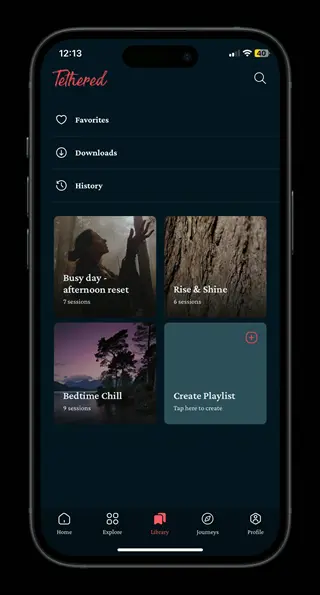
Sleep Meditation
- Technique: Progressive muscle relaxation combined with soothing narration specifically designed to facilitate sleep transition
- Focus: Transitioning smoothly from wakefulness to restful sleep states through gradual mental and physical release
- Benefits: Improved sleep onset efficiency and significant reduction in nighttime anxiety through regular practice
- Beginner Tip: Select sessions specifically designed for insomnia sufferers featuring extra gentle guidance techniques
- Teacher Example: Andrew Johnson's clinically developed deep relaxation protocols for persistent sleep challenges
- App Integration: Headspace sleepcasts combine sleep meditation with ambient sound environments for deeper rest
Overcoming Common Challenges
Physical discomfort is the first meditation challenge that many beginner practitioners face. To avoid this, choose supportive cushions or chairs that allow the spine to be properly aligned. You may also find that adjusting the room temperature to between 68°F and 72°F will help. Change position during sitting sessions so
It can be frustrating to have mental distractions like difficulty focusing, but this is perfectly normal. Pause briefly to label these thoughts as planning or remembering. Then gently return to your breath. With each return, you strengthen your attention muscles.
To overcome consistency barriers, tie a new meditation practice into existing habits. Meditate just after morning coffee or just before brushing your teeth at night. Begin with just two minutes daily. Consider going one step further and marking days when you meditate on a large calendar. The visual cue of seeing several days marked off can increase motivation.
Adjust your expectations according to the phase of life you are currently in. Be aware that you may need to conduct shorter sessions during busy weeks. If you miss a session, restart without self-criticism. Short, consistent practices are better than perfect sessions that are performed sporadically. Think of practice as neither perfect nor imperfect, but progressive!
Posture Adjustments
- Place firm cushion under sit bones to tilt pelvis forward naturally
- Rest back against wall if maintaining upright position becomes difficult
- Keep knees slightly lower than hips when seated in chairs
- Alternate between cross-legged and kneeling positions weekly
- Use folded blanket under ankles during floor sitting
- Support elbows with pillows during longer sessions
Environmental Tweaks
- Maintain room temperature between 68-72°F (20-22°C) for comfort
- Use supportive floor mat when practicing on hard surfaces
- Position meditation space away from direct air vents or drafts
- Place soft lighting behind to prevent eye strain
- Wear layered clothing for easy temperature regulation
- Use non-restrictive fabrics allowing natural breathing movement
Body Awareness
- Scan for tension areas before starting each session
- Consciously relax jaw muscles and soften facial expression
- Release shoulder tension by rolling them backward gently
- Keep hands resting comfortably without gripping or clasping
- Notice weight distribution between sitting bones evenly
- Adjust position at first sign of numbness or tingling
Timing Adjustments
- Shorten sessions during high-stress days to maintain consistency
- Practice after light stretching to reduce stiffness during meditation
- Avoid meditating immediately after heavy meals causing drowsiness
- Align practice with natural energy peaks like morning or evening
- Use five-minute micro-sessions when schedule disruptions occur
- Track optimal meditation times in journal over two-week period
Pain Response
- Temporarily shift focus to pain area without judgment or analysis
- Breathe into discomfort imagining breath softening tense muscles
- Modify posture rather than pushing through sharp pain signals
- Try alternative positions like lying down for acute discomfort
- Consult physical therapist if chronic pain persists during practice
- Remember discomfort often diminishes as body adapts to stillness
Habit Anchoring
- Attach meditation to existing routines like morning coffee
- Set phone reminder with motivating message not obligation
- Keep meditation cushion visible in living space
- Start with two-minute sessions to overcome resistance
- Record streaks on calendar for visual motivation
- Pair practice with pleasant ritual like tea afterward
Expectation Management
- Accept variability in daily practice quality
- Focus on showing up rather than perfect sessions
- Notice subtle benefits like increased patience first
- Celebrate seven-day consistency before duration increase
- Adjust goals seasonally for lifestyle changes
- Forgive missed days without self-criticism
Community Support
- Join free online meditation groups for accountability
- Find practice partner for weekly check-ins
- Attend local beginner workshops monthly
- Follow inspirational teachers on social media
- Share progress in meditation apps' community features
- Participate in thirty-day challenges for structure
Motivation Boosters
- Create meditation playlist with inspiring pre-practice music
- Read meditation benefits list before challenging sessions
- Visualize desired outcomes like calm mornings or better sleep
- Place motivational quotes near meditation space
- Reward monthly consistency with special self-care activity
- Reflect on progress through monthly review sessions
Tech Integration
- Use habit-tracking apps with reminder notifications for sessions
- Join virtual meditation groups for daily accountability check-ins
- Set phone to 'Do Not Disturb' mode during practice time
- Review session history in meditation apps for progress motivation
- Try wearable biofeedback devices monitoring relaxation states
- Create dedicated meditation playlist signaling practice start
Creating a Lasting Habit
Cultivating a meditation practice is like caring for a plant; it takes time and patience to grow. Start with tiny sessions of only two minutes, connected to already established behaviors, such as morning coffee. It's worth repeating that consistency is more important than duration initially. Calendar marks for visible tracking of your
Different lifestyles require different anchoring techniques. For example, business people might meditate after closing their work computers, while parents could meditate during their children's nap times. Students would benefit from meditating before studying, and retired individuals would benefit from morning meditations. Match the routines to the natural rhythms of the day.
Pursue a progress not perfection journey and be flexible in your daily practice. Accept that if you miss a session, you can always restart without guilt. Accept that on some days it is easier to focus. It is far more important to be there consistently than to be able to
Flexible tracking keeps you on track. If you switch to another environment while traveling, meditate for five minutes in the airport rather than 10-15 minutes. If you're sick, do lying down practices instead of sitting. Switch up some techniques every three months to avoid boredom. Being flexible makes your meditation sustainable for the long haul.
Micro-Commitments
- Begin with two-minute daily sessions for first seven days
- Use phone alarm labeled 'mindful minute' as consistent trigger
- Place meditation cushion in high-visibility location daily
- Link practice to existing habits like tooth-brushing
- Celebrate daily completion with checkmark on calendar
- Gradually increase duration only after three weeks
Environment Design
- Dedicate permanent meditation corner with minimal distractions
- Store accessories like cushions and timers within easy reach
- Use room divider or plants to create visual boundary
- Set digital boundaries with 'Do Not Disturb' during sessions
- Add pleasant elements like soft lighting or calming scents
- Ensure comfortable temperature between 68-72°F (20-22°C)
Progress Tracking
- Use physical calendar for visible streak marking
- Record brief session notes about focus and distractions
- Note subtle benefits like increased patience in daily life
- Set monthly rather than daily consistency goals
- Review progress weekly without judgment of missed days
- Adjust targets quarterly to match lifestyle changes
Motivation Maintenance
- List personal meditation benefits on visible sticky notes
- Follow inspirational teachers on social media platforms
- Join free thirty-day meditation challenges for structure
- Pair practice with enjoyable ritual like herbal tea
- Reward monthly consistency with relaxing activities
- Visualize desired outcomes during challenging sessions
Flexible Adaptation
- Accept five-minute sessions when schedules are hectic
- Try alternative forms like walking meditation when traveling
- Use guided sessions during high-stress periods
- Adjust time of day seasonally based on energy levels
- Switch meditation techniques quarterly to maintain interest
- Forgive lapses immediately without self-criticism
Meditation for Different Lifestyles
Meditation fits easily into any lifestyle with simple modifications. *Busy workers* can take three-minute breathing sessions between meetings. Parents can practice meditation during their children's play hours. Travelers can find time to meditate on their journeys. Students benefit from meditating before they begin studying. Every lifestyle can hold a place
Time-efficient methods are useful for busy schedules. Try five-minute micro sessions with phone alarms as reminders. During transitions, practice breath awareness during commutes. Or try walking meditation between tasks. Over time, these moments add up to have a serious effect.
Meditating as a parent means being flexible with your practice techniques. Use nap times to practice seated meditation yourself or incorporate mindfulness practices that involve the whole family. Create an apparent meditation nook in shared family rooms. Learn to accept and endure some disturbed practice times, rather than being upset by it. Consistency
Traveling meditation is inherently adaptable. Notice your breath on airplanes or sit in your hotel room and practice grounding. Download your guided meditations for offline access in case of an internet outage. Use the opportunity to focus on your senses in unfamiliar settings. These changes in pods develop your modality over time.
Busy Professionals
- Schedule three-minute breath focus sessions between meetings
- Use lunch breaks for ten-minute guided meditations
- Practice walking meditation during office building transitions
- Set phone reminders for daily consistency maintenance
- Focus on stress release during commute transitions
- Utilize desk chair posture for seated micro-sessions
Parents
- Practice during children's nap times or quiet play
- Incorporate family mindfulness activities like nature sound focus
- Use early morning sessions before household wakes
- Try short loving-kindness practices during childcare breaks
- Create meditation corner in shared living space
- Focus on patience cultivation during challenging moments
Students
- Meditate before study sessions for improved focus
- Use exam periods for stress-reduction techniques
- Practice in dorm rooms between classes
- Join campus meditation groups for accountability
- Try library study breaks for five-minute resets
- Focus on anxiety reduction before presentations
Travelers
- Practice breath awareness during flights or transit
- Use hotel room sessions for grounding after journeys
- Try airport meditation pods during layovers
- Focus on sensory awareness in new environments
- Download offline guided sessions for connectivity issues
- Use time zone adjustments as meditation triggers
Retirees
- Establish morning routine with extended sessions
- Join senior center meditation groups regularly
- Garden meditation combining nature awareness with breath
- Focus on gratitude cultivation during sessions
- Experiment with various techniques like tai chi
- Use after-lunch sessions for energy renewal
5 Common Myths
You must completely clear your mind of all thoughts to successfully meditate.
Meditation is not to stop the thoughts from coming, but to change your relationship with them. When thoughts arise during meditation you would then simply acknowledge them but not in a judgmental way and gently bring your attention back to your breath or other anchor of your choice. This actually consciously noticing the distractions to your focus on your meditation, and refocussing on your meditation, is the real skill being developed. The expectation of no Mind at all puts too much and needless pressure and adds frustration to meditation for the beginner
Productive meditation requires remaining seated in discomforting lotus posture for unending periods with no option of change of posture.
Comfort with posture is essential to the continued habit. Any position can be assumed for the work which keeps the alertness of the mind - on chairs, kneeling benches, or even lying down. The main point is to keep the back fairly straight so that there is no tendency to drowsiness. Start with a period of two to five minutes, and gradually increase the duration, as you become easier in your position. The use of muscle or connective-tissue gain is inconsequently notable as consistent habit.
Meditation inherently has a religious or spiritual basis making it incompatible with modern secular thoroughfare
Though it has roots in spiritual traditions, modern practices of mindfulness are completely secular and scientifically validated. Thousands of peer-reviewed studies show its benefits, which include stress reduction and better concentration, without necessitating any religious belief. The techniques such as breath awareness or body scan operate by means of physiological processes which are equally available to all regardless of their specific world view.
Right away, in your very first meditation session, you will experience significant and dramatic benefits
The benefits of meditation accumulate slowly, similar to the benefits of physical exercise. People feel some subtle calmness after the first few meditation sessions at different times, but significant change usually takes months of regular practice. Research shows measurable changes in the brain occur after eight weeks of practicing each day. The important thing is continuous practice with a lack of attachment to immediate results, noticing small changes in every-day reactions over time.
If you find it consistently hard to focus during meditation, you are fundamentally failing at meditation
The practice is working, not failing, if you notice distractions. Whenever you notice that your mind has wandered and gently return to your area of focus, you are strengthening mindfulness muscles. The noticing-and-returning process is the practice. The regular practice of it leads to fewer distractions naturally
Conclusion
Your meditation path continues to change without a fixed endpoint. Rather than striving for perfection, view each session as a single facet of a lifelong journey. Much of the value is in showing up consistently. This practice meets you today precisely at the level where you are not, and it is at this level where others are.
Tailor your mindfulness practice to meet evolving needs, shift techniques during stressful times or travel. Adjust session times according to daily energy levels. When motivation wanes, try new techniques to boost your energy. Your practice thrives on flexibility rather.
Be kind to yourself during challenging times. Acknowledge when it is not easy to focus and do so without judgment. Gently come back after missed sessions. Celebrate even the smallest victories, like noticing restlessness. Self-compassion will be your greatest ally in the process.
The lifelong benefits accrue through the regular practice of meditation. The effects first become noticeable in subtle things, such as greater calmness in reaction to traffic or improved sleep. With time, meditation becomes a dependable lodestar in the midst of life's changes. The steady effort you make leads to lasting mental stamina.
External Sources
Frequently Asked Questions
How should beginners start meditating?
Beginners should start with short breath awareness sessions in a quiet space. Focus on natural breathing patterns for just 2-5 minutes daily, using comfortable postures like chair sitting. Gradually increase duration as concentration improves over consistent practice.
What are the essential meditation rules?
The foundational rules include maintaining non-judgmental awareness and consistent practice. Key principles involve gentle refocusing when distracted, accepting thoughts without resistance, and prioritizing regularity over session length. Comfortable posture and patience are equally vital.
Can I meditate lying down?
Yes, lying down meditation is acceptable with precautions. Keep knees bent to maintain alertness, place hands on abdomen for awareness, and avoid this position if prone to sleepiness. It's ideal for body scan techniques or physical limitations.
How do I know I'm meditating correctly?
Correct meditation isn't about emptying the mind but observing thoughts non-judgmentally. Signs of proper practice include gently returning focus after distractions, noticing subtle breath sensations, and feeling anchored without frustration about mental activity.
Is listening to music during meditation recommended?
Instrumental or nature sounds can enhance focus for some practitioners. However, beginners should start without music to develop fundamental attention skills. If using audio, ensure it doesn't dominate awareness but supports breath or body focus.
What should I avoid during meditation?
Avoid forcing concentration or criticizing distractions. Don't strain physically in uncomfortable postures, resist analyzing thoughts, or expect immediate results. Pushing too hard creates tension counter to mindfulness principles. Gentle persistence yields better outcomes.
Is falling asleep during meditation acceptable?
Occasional sleepiness is normal but indicates reduced alertness. If consistently dozing, switch to seated postures, meditate earlier when energized, or shorten sessions. Sleepiness often diminishes as practice deepens and mental stamina increases.
What's the ideal meditation duration?
Start with 2-5 minute sessions and gradually increase to 10-20 minutes over weeks. Consistency matters more than duration - daily short practices outperform sporadic long sessions. Adjust based on energy levels and schedule constraints.
What should I focus on while meditating?
Primary anchors include:
- Breath sensations at nostrils or abdomen
- Bodily tensions during body scans
- Repeating phrases in loving-kindness practice
- Nature imagery during visualization
- Walking sensations in movement meditation
When is the best time to meditate?
Morning sessions capitalize on fresh focus, while evenings help unwind. Align practice with natural energy peaks - early risers benefit from AM meditation, night owls from PM. Consistency in timing reinforces habit formation more than specific hours.
